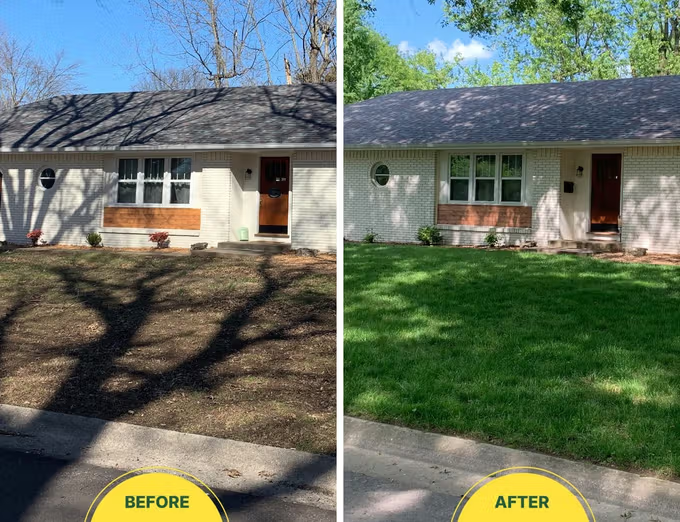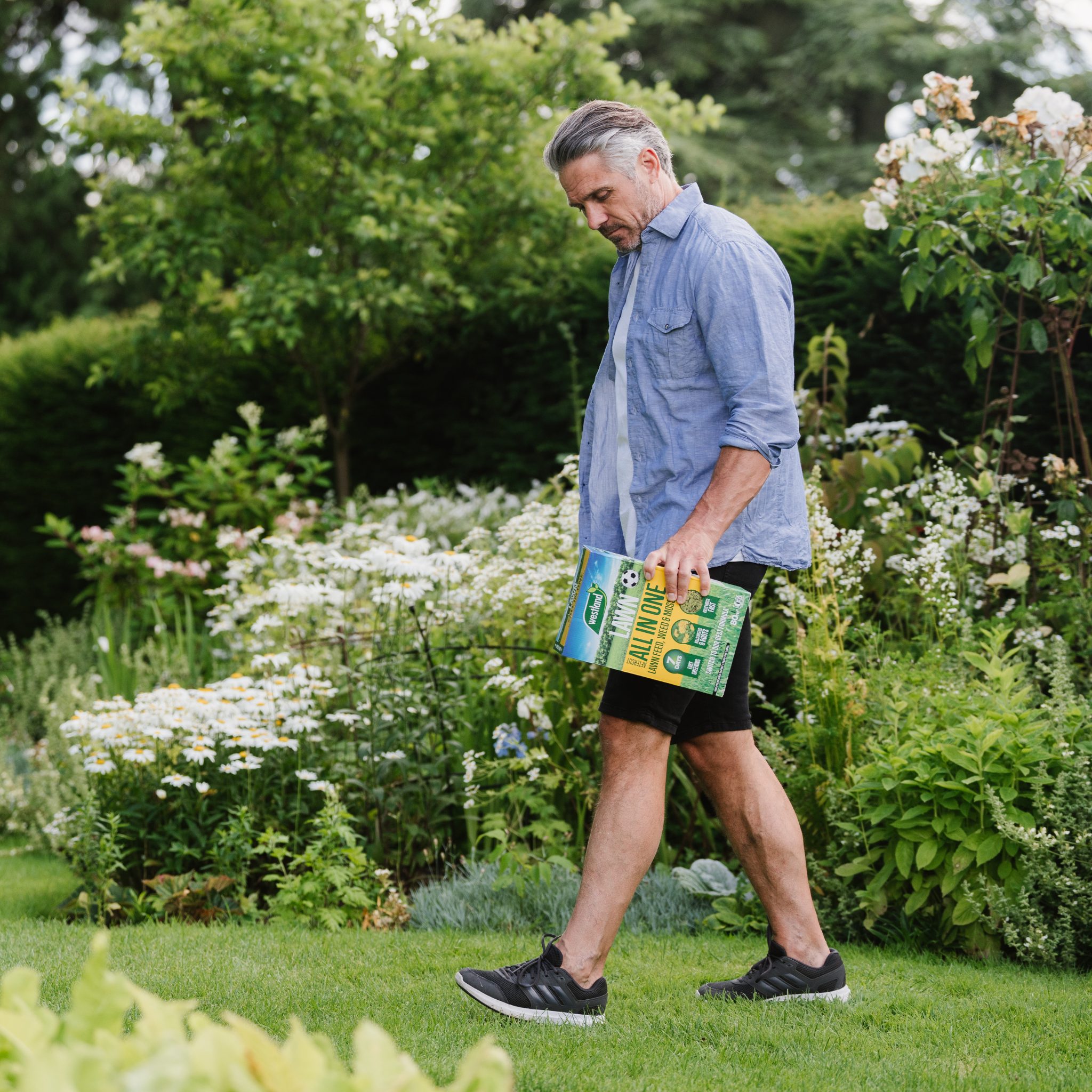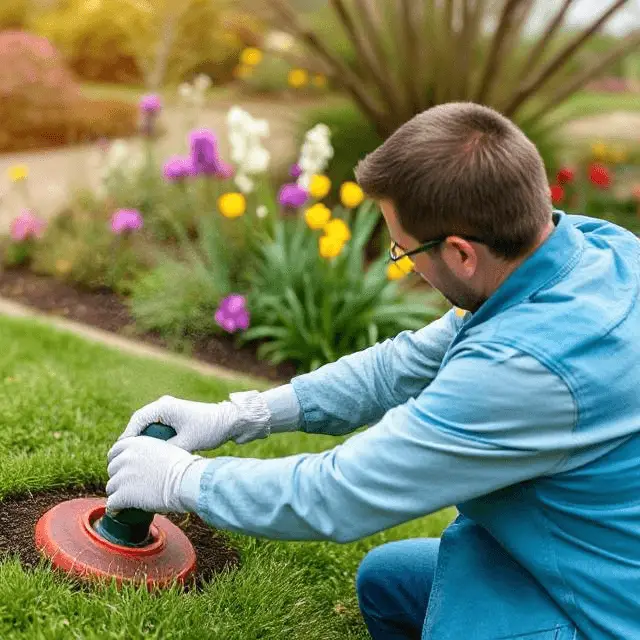Are Coffee Grounds Good for Grass?
Last Updated on August 25, 2020 by Duncan
If you recently got a whiz-bang coffee machine at home or you have noticed your local coffee shop is throwing away a lot of used coffee grounds that you feel you can put into better use, and you have a lawn, you must be wondering, are coffee grounds good for grass?
Yes, adding coffee grounds as part of your lawn care routine can have a significant impact on your grass. Coffee grounds are rich in nitrogen, so you can use the grounds as an all-natural nitrogen-based fertilizer.
Other than nitrogen, the grounds also contain phosphorus and other trace elements that can be of benefit to your lawn.
Unlike commercial, fast-release fertilizers, coffee grounds break down slowly, so they release nutrients and minerals slowly into your grass over time.
Snails, slugs, and other slimy pests feed on grass, and by eating grass shoots, they kill the entire plant, and you end up with a patched lawn. Coffee grounds are highly effective at keeping off the slimy pests.
Slugs and snails are sensitive to caffeine, so when they come into contact with coffee grounds, they leave the area letting your lawn flourish.
The coffee-worm connection
The significant benefit of using coffee grounds on your lawn is they attract worms that are healthy to your grass. Worms dig tunnels as they are moving under the soil surface, and these tunnels aid in aerating the lawn.
The tunnels also allow air and moisture to reach the grassroots, and you end up with a healthy, strong lawn.
As the worms feed, they breakdown vital nutrients from coffee grounds and soils, which are passed in castings. Castings are worm waste and function as an excellent organic fertilizer for your lawn.
The castings contain potassium, phosphorus, nitrogen along with helpful microbes and bacteria. Castings have also been shown to improve the soil structure and promote drainage, all of which are helpful to a healthy lawn.
How do you add coffee grounds to your grass?
You can add coffee grounds in two ways: adding them directly to grass or by first adding them to compost then spreading the compost to the grass.
If you want to add coffee grounds directly to grass, you need to have enough. You can do this by saving the used coffee grounds in a bin after drinking your daily morning coffee.
If you make coffee in your office, you can place a bin in a selected area and ask your colleagues to put their used grounds there.
Do you have a coffee house such as Starbucks of Java in your local area? Even better. Talk to the management and ask them if they can save you the used grounds.
Most of the coffee shops will be glad to do it as it means less fill on their part. Ensure you pass by the coffee shop every day and collect the grounds before they accumulate to bothersome amounts.
After collecting enough coffee grounds, empty the grounds onto a tarp and let them sit under the sun for a day to dry out. After they have dried out, you should apply them by themselves or along with nitrogen fertilizer evenly over the entire lawn.
When applying the grounds, apply just a light layer as adding too much of will result in the grounds getting compacted and block water and oxygen from reaching the grass, which can lead to the grass drying out.
If you don’t have access to a lot of coffee grounds, you should add the little grounds to compost then in the future, add the compost to your lawn.
In addition to this meaning you use minimal coffee grounds, it also gives the grounds time to break down into a form that is easy for grass to absorb nutrients and trace elements.
When adding the coffee grounds to compost, ensure the compost bin or pile doesn’t contain more than 20% of coffee grounds as having more than this will create negative effects.
When the compost gets ready, usually after 90 or so days, you should use it as a top dressing for your grass. Apply a thin coat evenly over the entire lawn then water it.
Coffee grounds and acidity
One of the reasons people shy away from using coffee grounds on their grass is they believe they are acidic, so they fear they will acidify their soil and destroy their lawns.
Are coffee grounds that acidic to affect the soil? Studies have reported the pH of coffee grounds to be anything from 4.6 to 8.4. Coffee grounds from major coffee houses such as Starbucks are labeled with a pH of 6.8, and their testing report indicates a pH of 6.2.
Many studies report a 6.7 pH value, which is barely acidic to affect your grass.
If you are still worried about the coffee grounds damaging your lawn, you should mix the grounds with your compost material and ensure the grounds are broken down thoroughly before applying on the soil.
What other ways can you use coffee grounds?
If you have got no lawn, but you have coffee grounds lying around, there are plenty of other ways you can use them. Some of these ways include:
Keeping cats out your backyard
Cats as pets are attractive and beautiful, but they can be destructive and messy. Some dig up the valuable plants and scavenge for food.
If you have had cat problems in the past, you know, adding strong smelling substances such as pepper, orange, and eucalyptus can prevent the feline friends from visiting your backyard. Brewed coffee grounds have the same effect.
Sprinkle coffee grounds around your yard, and cats will stay away. As you are applying coffee grounds, remember that caffeine is highly toxic to cats, so sprinkle the grounds with caution.
You don’t want to harm your pets, forcing you to make an emergency and costly trip to the vet, do you?
Suppressing fungal diseases
You didn’t know coffee grounds are anti-microbial, did you? As the organic matter breaks down in your garden, it has been shown to stop fungal diseases such as Pythium, Fusarium, and Sclerotinia.
Coffee grounds have also been shown to slow down the development of E.coli and Staphylococcus.
Using the bitter material on tomatoes
Tomatoes need soil rich in nitrogen to grow healthy and strong, and guess what coffee grounds are rich in? Yes, nitrogen.
By applying the bitter material on your tomato plants, you promote the growth of strong roots and also promote the ability of tomatoes to produce chlorophyll, vital for photosynthesis.
Like when you apply them on your grass, coffee grounds attract earthworms that boost the quality of soil around your tomato plants.
The grounds put off slugs attracted to tomato plants, and you end up with healthy tomatoes.
If you are wondering what is the best way to apply coffee grounds, mix coffee grounds within your compost or topsoil then apply to your plants.
Using the grounds as fertilizer for roses
Although, they are challenging to grow, rose bushes love coffee bits due to their high nitrogen content. To make fertilizer for the rose bushes, add coffee grounds straight to compost or sprinkle dried grounds at the bottom of your rose bush.
Another excellent way is to mix coffee grounds with water then pour water on your rose brush. For best results, do this once or twice a month.
Boosting the grown of blueberries
Often, blueberry plants don’t need fertilizer, but they thrive in a nitrogen-rich environment. The cool thing is you can add grinds straight to the soil. Add 4-5 cups to the ground around your bush then mix it with topsoil.
For the best outcome, do this every two weeks.
Changing the color of Hydrangeas
Coffee grounds change and improve the color of hydrangea flowers. When you sprinkle some coffee grounds into the top layer of the soil, the colors of the flowers begin getting brighter and become more vivid.
You can add the grounds directly on the soil or mix them with water then pour them on the soil.
When should you not use coffee grounds?
The obvious one is if you have cat pets. As mentioned above, cats are highly toxic to caffeine, so it’s wise you avoid scattering coffee grounds directly on the soil.
If you have to use them, mix them with compost to reduce the amount that comes into contact with your cat.
If you are applying grinds in your garden, ensure you dig proper grounds into the soil that the cat cant dig out.
Conclusion
While coffee grounds are excellent for your grass and provide your lawn with helpful nutrients, use them as a supplement—not as a complete fertilizer.
Remember, there are plenty of good quality fertilizers with a complete nutrient profile that you can use to attain a healthy lawn.


